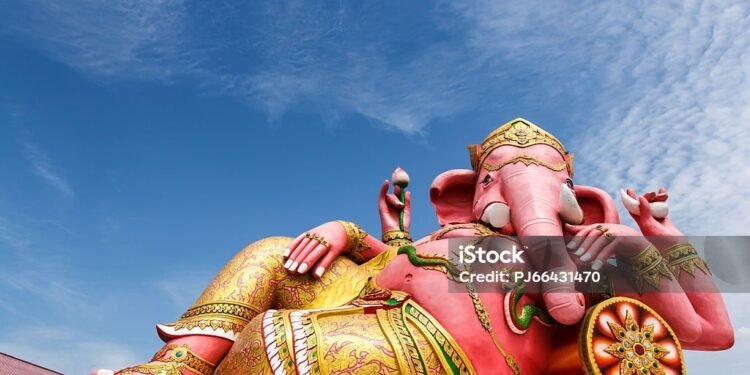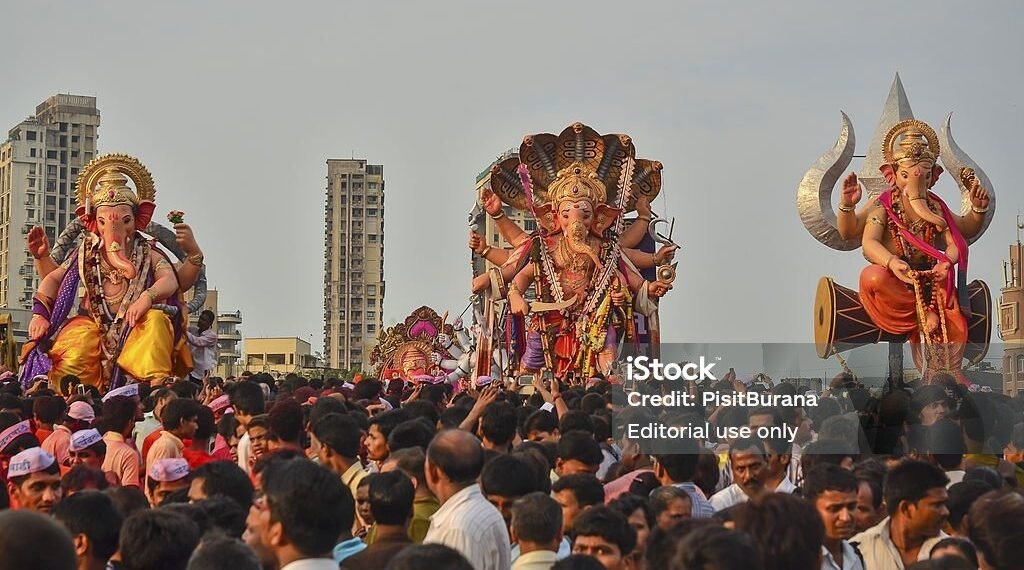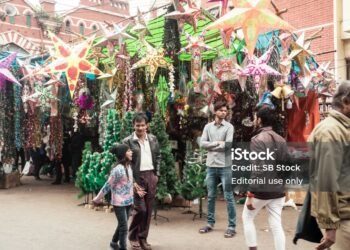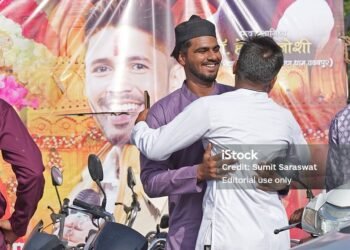Introduction
Ganesh Chaturthi, the ten-day celebration of Lord Ganesha’s birth, transforms homes and cities—especially across Maharashtra—into vibrant arenas of devotion, community service, music, and food. Idols are installed with Vedic chants, naivedya and aarti are offered daily, and the festival culminates in visarjan processions that return Ganesha to water with the hope, “Ganpati Bappa Morya, pudhchya varshi lavkar ya!” At the heart of it all are rituals rich with meaning, from the offering of modaks to the annadaan traditions that feed lakhs in Mumbai’s iconic pandals.
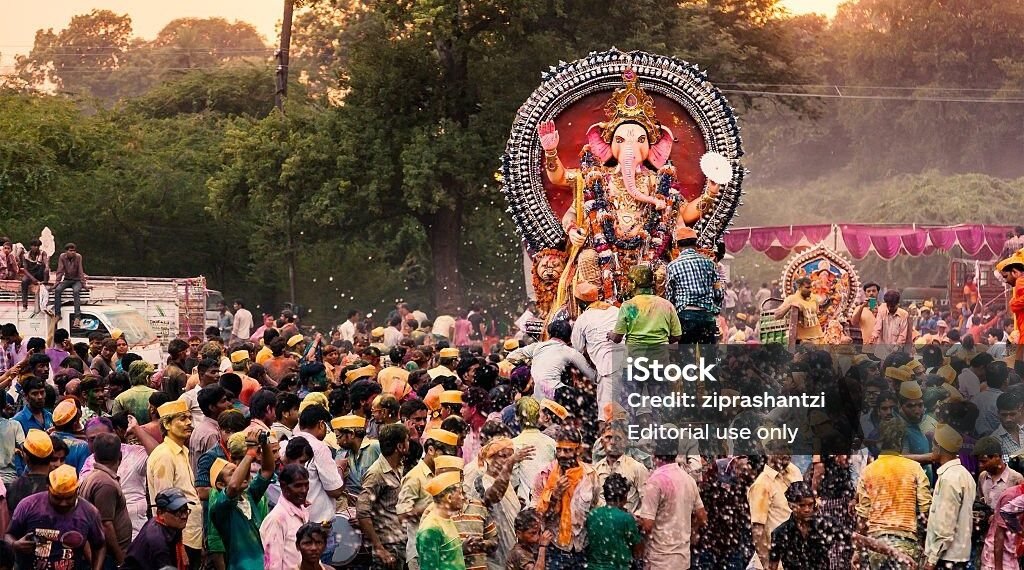
Context and origins
Observed on the fourth day (Chaturthi) of the bright fortnight of Bhadrapada (Aug–Sep), Ganesh Chaturthi venerates Ganesha as Vighnaharta (remover of obstacles) and lord of wisdom and auspicious beginnings. Domestically, small murtis are installed for 1½, 3, 5, 7 or 10 days; publicly, sarvajanik mandals raise pandals that become devotional and cultural hubs with bhajans, classical performances, and seva kitchens. Historically revived as a public festival by Lokmanya Tilak in the late 19th century, the utsav became a vehicle for unity and public culture—a legacy that thrives in Mumbai’s neighborhood mandals today.
Key features and vocabulary
Pran-pratishtha and daily aarti: Installation with Vedic mantras (often Ganapati Atharvashirsha), followed by morning–evening aartis and naivedya; families and pandals observe vrata and distribute prasada.
Modak: Steamed ukadiche modak (rice flour shell, coconut–jaggery filling) are offered as Ganesha’s favorite sweet—symbolizing wisdom’s sweetness and the discipline that guards it.
Visarjan: On Anant Chaturdashi, idols are carried in musical processions for immersion, with Nashik dhol–tasha troupes shaping the festival’s heartbeat in Maharashtra.
Mumbai’s landmark pandals and seva ethos
Lalbaugcha Raja (Parel): Among India’s most visited Ganesh mandals, drawing lakhs; offers separate queues for “Charansparsh” (touching the feet) and “Mukhdarshan” (glimpse), with detailed schedules and live streaming announced annually.
GSB Seva Mandal (King’s Circle, Matunga): Known as India’s “richest” Ganpati, the idol is adorned with gold and silver, while the mandal preserves a serene South Indian ritual ambience—Vedic homas, bhajans, and eco-friendly clay murtis.
Annadaan kitchens: The GSB open kitchen is famed for satvik bhojan on banana leaves, feeding tens of thousands daily; operations begin before dawn and mobilize hundreds of chefs and volunteers in a seamless chain of seva.
Inside the kitchen: faith as food
Pandals like GSB exemplify how devotion becomes logistics. Breakfast, lunch, and dinner schedules are executed with precision—rice mounds and cauldrons of rasam and bhaji are prepared on earthen stoves, with teams that fly in yearly to serve. The satvik menu (no onion–garlic) reflects temple-style kitchens; volunteers manage prasad packing lines, fruits and coconut baskets, and annadaan seating, turning the queue experience into hospitality rather than haste.
Rituals with a message: tula-bhar and prasad
Tula-bhar: A classical practice where a devotee is weighed on a balance against grains, fruits, or other staples, which are then donated—turning personal vows into public nourishment.
Prasad economy: From coconut and fruits to packed sweets and savories, mandals curate prasad bags with care; at some venues, the banana-leaf meal becomes a memory of community as much as of cuisine.
Modaks: taste and symbolism
The modak’s pointed top is said to signify spiritual ascent while its rounded base embraces the world; the sweet core represents the bliss of inner knowledge, protected by a disciplined shell. Stories recount how Ganesha won a divine modak through filial wisdom, anchoring the sweet as a symbol of intellect and devotion. Home cooks steam soft ukadiche modak on banana leaves; fried variants and chocolate/mawa renditions find space in contemporary mithai boxes without losing the sweet’s ritual center.
Processions and percussion: Nashik dhol to visarjan
Ganeshotsav’s soundscape peaks in the streets: dhol–tasha pathaks (troupes) rehearse for weeks, composing thunderous yet synchronized rhythms that accompany visarjan. In Mumbai alone, tens of thousands of murtis join the immersion cadence on Anant Chaturdashi, with coastal and riverfronts lit by torches and chants. Neighborhoods organize eco-ponds and silt-controlled immersion zones, balancing devotion with marine and civic care.
Eco-conscious Ganeshotsav
Many mandals adopt shadu mati (natural clay) murtis and water-soluble décor, restrict plastic garlands, and coordinate with municipal eco-ponds. GSB highlights clay idols and a quieter, Vedic ritual setting; Lalbaugcha Raja and major mandals publish schedules, routes, and online darshan to reduce congestion and improve safety and sustainability outcomes.
How to experience (pilgrim and visitor tips)
Plan darshan smartly: Check official mandal sites for queue timings, live streams, and special darshan categories; carry water, wear modest comfortable clothing, and follow volunteer instructions.
Seek seva: Join prasad packing, fruit sorting, or annadaan serving at service-oriented pandals; brief orientations help align with satvik kitchen protocols.
Try modaks mindfully: Sample steamed ukadiche modak at home-style stalls or mithai shops—freshness and delicate pleating matter; respect prasad as consecrated food.
Choose eco-immersion: If immersing a home murti, opt for designated ponds; use natural decorations (durva, hibiscus), and keep sound levels considerate for community well-being.
Contemporary relevance and legacy
Ganesh Chaturthi is civil theology in action: faith becomes shared labor, kitchens become commons, and music becomes a public rite of belonging. Its grand mandals—Lalbaugcha Raja’s ceaseless queues and GSB’s gold-clad yet serene darshan—mirror a spectrum of devotion, from spectacle to stillness. Year after year, the festival renews a civic habit: begin together, feed together, move together, and finally let go together at visarjan—trusting the cycle of return and the promise of auspicious new beginnings.

